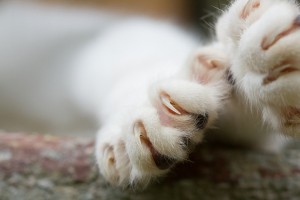Declawing can be described as significant surgical treatment known as onychectomy, carried out under anesthesia that takes away the end of each digit (from the very first knuckle out) of the cat’s forepaws. There exists a slight possibility of death within the surgical treatment, and a declawed cat might have an elevated chance of infection along with life-long soreness in its paws. This kind of surgical treatment is not recommended for an adult cat and it’s regarded in certain countries (see below) as an act of animal cruelty.
Individuals commonly have cats declawed to keep their pet from hunting and from harming furniture. In the US, some landlords require that tenants’ cats be declawed.
Veterinarians are generally critical of the procedure and a few won’t even perform it due to the fact that the absence of claws in a cat:
- Deprives the cat of its primary defense abilities, which includes getting away from potential predators by climbing trees;
- Impairs its stretching as well as physical exercise routines, ultimately causing muscle atrophy;
- Jeopardizes its ability to balance on slim surfaces including railings plus fence tops, ultimately causing injuries from falls;
- Could cause insecurity along with a subsequent inclination to bite.
 This operation is uncommon beyond North America. Throughout Finland, Germany, the Netherlands as well as Switzerland, declawing is forbidden by the laws against cruelty to animals. Within many other European countries, it is not allowed under the conditions of the European Convention for the Protection of Pets, unless of course “a veterinarian considers [such] non-curative procedures necessary either for veterinary medical reasons as well as for the advantage of (the) animal”. Within Britain, animal shelters find it difficult to place imported cats which have already been declawed and consequently most are usually euthanized.
This operation is uncommon beyond North America. Throughout Finland, Germany, the Netherlands as well as Switzerland, declawing is forbidden by the laws against cruelty to animals. Within many other European countries, it is not allowed under the conditions of the European Convention for the Protection of Pets, unless of course “a veterinarian considers [such] non-curative procedures necessary either for veterinary medical reasons as well as for the advantage of (the) animal”. Within Britain, animal shelters find it difficult to place imported cats which have already been declawed and consequently most are usually euthanized.
An alternative to declawing is the application of blunt, vinyl nail caps that are usually affixed to the claws with nontoxic glue, like “soft paws” requires regular replacement when the cat sheds its claw sheaths (about every 4 to 6 weeks). However, the cat may nonetheless experience difficulties due to the fact the capped nails are not as powerful as claws.
My cats all have their claws and personally for me I would not consider declawing, I prefer to keep my cats nails clipped and provide plenty of cat scratching posts to keep them from scratching my furniture. If you are having problems with your cat scratching the furniture I would also suggest a training spray, I have used SmartyKat Scratch Not spray with much success.

Please contribute to this article discussion and post a comment below...
Powered by Facebook Comments